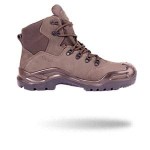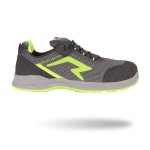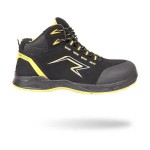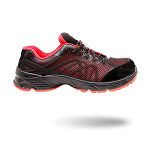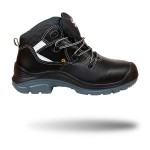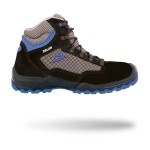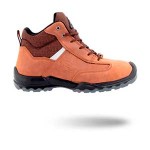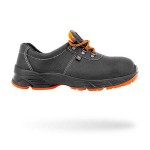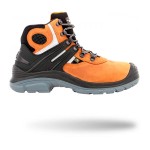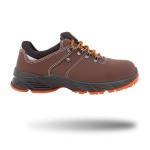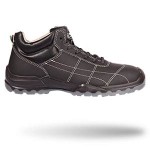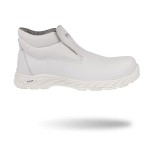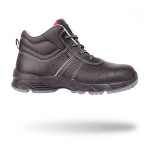Standards
PROTECTION CLASS | REQUIREMENTS |
SB | Basic requirements (see above) |
S1 | As SB, plus Closed seat region Antistatic properties Energy absorption of seat region Resistance to fuel oil |
S1P | As S1, plus: Penetration resistance |
S2 | As S1, plus: Water penetration and absorption |
S3 | As S2, plus: Penetration resistance Cleated outsole |
Please note that every protection class was developed for special conditions: for example, for job in e.g. logistics in a warehouse without any work to do outdoors the S1P class would be a perfect solution as it offers great breathability.
The same is valid for the slip resistance of the footwear. The SRC class is a versatile solution, but maybe SRA or SRB will be enough for you? For more information check the table below:
LABEL | CHARACTERISTICS TESTED | TEST CONDITIONS | FRICTION COEFFICIENT |
|---|---|---|---|
SRA | Slip resistance on ceramic tile floors with sodium lauryl sulfate solution (SLS) |
Forward
slip of the heel |
No
less than 0.28 |
SRB | Slip resistance on steel floors with glycerol |
Forward
slip of the heel |
No
less than 0.13 |
SRC | Slip resistance on ceramic tile floors with sodium lauryl sulfate solution and on steel floors with glycerol |
Includes
all test conditions cited under a. and b. |
|
There are additional protection features that the safety footwear can offer. For more information check the table below:
Additional requirements for special applications with corresponding symbols
SYMBOL | RISK COVERED | EN ISO 20345 | EN ISO 20347 | |||||||
|---|---|---|---|---|---|---|---|---|---|---|
SB | S1 | S2 | S3 | S5 | OB | O1 | O2 | O3 | ||
– | Basic | ✓ | ✓ | ✓ | ✓ | ✓ | ✓ | ✓ | ✓ | ✓ |
P | Penetration resistance* | ⍟ | ⍟ | ⍟ | ✓ | ✓ | ⍟ | ⍟ | ⍟ | ✓ |
A | Antistatic footwear | ⍟ | ✓ | ✓ | ✓ | ✓ | ⍟ | ✓ | ✓ | ✓ |
E | Energy absorption around heel | ⍟ | ✓ | ✓ | ✓ | ✓ | ⍟ | ✓ | ✓ | ✓ |
HI | Heat insulation | ⍟ | ⍟ | ⍟ | ⍟ | ⍟ | ⍟ | ⍟ | ⍟ | ⍟ |
CI | Cold insulation | ⍟ | ⍟ | ⍟ | ⍟ | ⍟ | ⍟ | ⍟ | ⍟ | ⍟ |
WRU | Water resistance of upper | ⍟ | ✓ | ✓ | ⍟ | ✓ | ✓ | |||
HRO | Heat resistance of outsole (+300 °C/min) | ⍟ | ⍟ | ⍟ | ⍟ | ⍟ | ⍟ | ⍟ | ⍟ | ⍟ |
WR | Whole shoe waterproof | ⍟ | ⍟ | ⍟ | ⍟ | ⍟ | ⍟ | ⍟ | ⍟ | |
M | Metatarsal protection | ⍟ | ⍟ | ⍟ | ⍟ | ⍟ | ⍟ | ⍟ | ⍟ | ⍟ |
FO | Resistance to oil and petrol | ⍟ | ✓ | ✓ | ✓ | ✓ | ⍟ | ⍟ | ⍟ | ⍟ |
✓ =>
Meets the specific requirement
⍟ =>
Requirement can be met but is not stipulated

